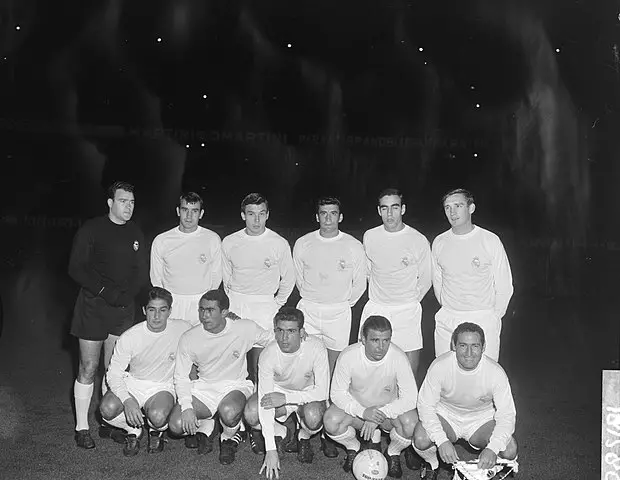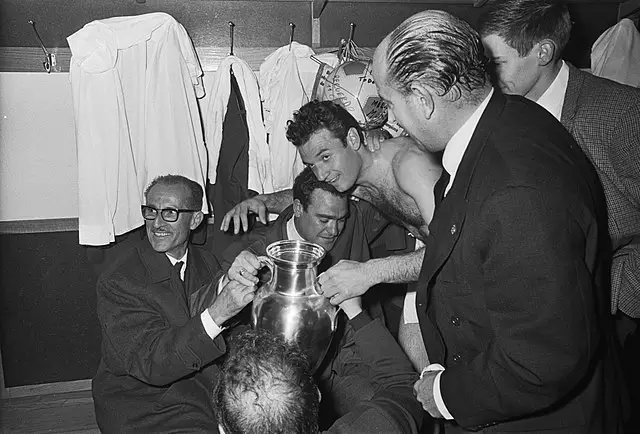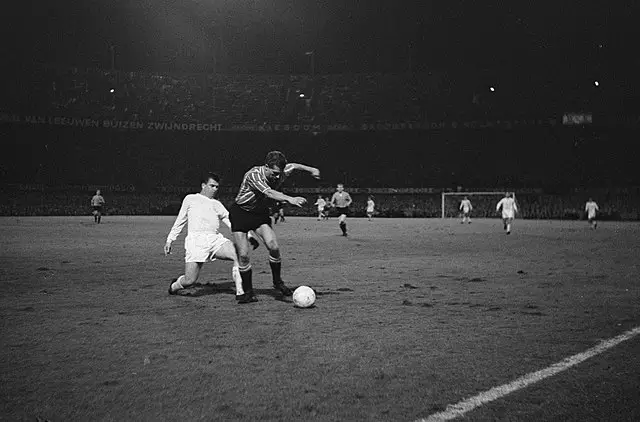Real Madrid Club de Fútbol
Real Madrid Club de Fútbol better known as Real Madrid is one of the biggest and most successful clubs in football history. In 2019 they were valued at $4.2 billion along with annual revenues of more than 750 million Euros. The Madrid team have had some of the best footballers in the club who took it to another level of success. However, it was not always the same. The club has seen its dog days but has also experienced a revival. The history of Real Madrid is filled with proud moments for the fans as they are the actual Kings of Europe.

History:
Football was first introduced in Madrid to the students, these students established a football club in the Free Institute of Education known in Spanish as Institución Libre de Enseñanza. The football club got split in 1900 into two clubs namely New Football de Madrid and Madrid FC. Julian Palacios became the first President of Madrid FC in 1900 and eventually when a new body was formed on 6th March 1902, Juan Padrós was elected as the President of the Madrid FC which had till now acquired the official status. Madrid won the Copa del Rey for 4 consecutive years which was at that time the only recognized football tournament in Spain. In 1912 Madrid made Campo de O’Donnell its first official home ground. In 1920, King Alphonso XIII gave Madrid the royal tag which translated to Real in Spanish, this ultimately led to the name “Real Madrid” and we can see the royalty touch in the logo of the club which has a crown.
During 1931, the Civil War in Spain started and the royalties were also dislodged. And due to these disruptions, Real Madrid again changed its name to Madrid and also changed its badge removing the crown till 1939 all the activities including football halted and amidst this, the club’s actions also came to a stop.

The Golden Era:
After the Civil War, when, in 1945 Santiago Bernabeu became the club’s President he greatly contributed to the Club’s history and worked for it immensely. He started the rebuilding of the club and in 1947 he instructed in the building of a new stadium called Estadio Chamartín Stadium which was a world-class stadium for that time and almost 1.5 lakh people could be fitted in the stadium. The stadium was renamed the Santiago Bernabeu stadium in honour of the personality behind the work.
After settling the club in a good position, in 1953 the signing of Superstar players into the club began. Many biggies like Alfredo di Stefano, Ferenc Puskás, Francisco Gento, Héctor Rial, and Raymond Kopa were signed to play for Real Madrid and the Santiago Bernabeu had a big hand in this, making the club one of the most successful clubs in both European and international stages. He worked with the club as the president for 33 years till his death in 1978. During his tenure, Real Madrid won 1 Intercontinental Cup, 6 Champions League(European Cups), 16 La Liga titles and 6 Spanish Cups raising the bar higher for other clubs to reach their potential. Real Madrid will forever owe Bernabeu for his extraordinary work for the club due to which they achieved such heights in a short span of time.
The legacy was then continued by Luis de Carlos. But during the end of the tenure, the club saw a slight downfall because of the factors like an ageing squad and the club was also in a transition period. After De Carlos, Ramon Mendoza became the next club president in 1985 and started rebuilding the club again and soon the club slowly began to focus on its academy players too.

Rise After Fall:
In 1980s the Spanish Media gave Real Madrid team a new name which was ‘La Quinta del Buitre’ (Vulture’s Cohort) after the legendary homegrown club player Emilio Butragueño who was the leader along with four other major players Manolo Sanchís, Rafael Martín Vázquez, Míchel and Miguel Pardeza. They made the core of Real Madrid and all five were homegrown players of the club. In this era, Real Madrid won 2 UEFA Cups and won 5 consecutive La Liga titles however they weren’t able to win the European Cup and the tournament was dominated by AC Milan. After Mendoza, Lorenzo Sans took over the presidential works of the club and he appointed Fabio Capello as the new coach of Real Madrid on 20th May 1996 but after only one season he returned backed to AC Milan. After Capello came Jupp Heynckes and under his management Real Madrid won the Champions League in 1998 against Juventus. However, Heynckes was soon sacked after some fallout from the board. José Antonio Camacho was then appointed as the next manager who himself resigned after some time, after which Guus Hiddink was appointed but even he was fired after one season and then John Toshack was made in charge where after 9 months in the 1999-2000 season he was too sacked. All and all during those last three years 7 managers were changed bringing instability into the team. But after these tribulations came Vicente del Bosque as the new manager of Real Madrid who with his entry into the club made the team win its 8th Champions League title against Valencia CF. Later Florentino Pérez became the president of the club, and his popularity peaked when he bought Luis Figo from Barcelona which seemed almost impossible as Figo was committed to Barcelona as a captain.

The Era We Cannot Get Over:
Soon we were introduced to the term “Galactico” when Perez started to bid on the biggest footballers present at the time and signed many big players like Zinedine Zidane, Ronaldo, David Beckham, Iván Helguera and others. Although they won the 2002 Champions League defeating Bayer Leverkusen of Germany, their success remained stagnant for a very long time and performed very underwhelming in the following seasons under Perez’s Presidentship. From 2006 to 2009 Ramón Calderón was made the president of Real Madrid but it was of no help for the club to revive itself in the European football scene. Once again in 2009 Florentino Pérez became the president and is still holding on to the position currently and during the last decade worked hard to bring back Real Madrid into the game again.
The 2009 transfer window is the most epic in the club’s history. He first and foremost signed Cristiano Ronaldo from Manchester United at a record fee at that time and in the same window he signed Kaka and Benzema too. Benzema was still in top form and Cristiano Ronaldo went on to become one of the greatest players ever for Real Madrid with supreme goal-scoring records held by him. After Perez became the president again, Manuel Pellegrini played the role of coach for one season, later he was sacked following the appointment of José Mourinho and Real Madrid won the 2011-12 season La Liga title but again 2012-13 season was underwhelming and Mourinho was sacked too. After that, Carlo Ancelotti became the manager who finally helped the club to win the 10th Champions League in a dramatic fixture against Atletico Madrid where Sergio Ramos’s 92:48 min epic header played the main role in pushing the game into extra time eventually winning the game with a score of 4-1. Many managerial changes were seen even after this, Ancelotti was replaced by Rafael Benítez who was later sacked and then came Zinadine Zidane.
Under Zidane’s management, Real Madrid won three consecutive Champions League titles in 2016,2017 and 2018 also known as the Three-Peat. The 2018-19 season was rather a transitional season for the club but in the 2019-2020 season, they won the La Liga title. We saw even in the last season of 2021 that they went to the Champions League semi-final but nevertheless didn’t win it. Finally this season of 2021-22, Pérez is still the president of Real Madrid along with Carlo Ancelotti becoming the manager once again doing his magic. Ancelotti made Madrid win another Champions League title to make the seat of Kings of Europe more firm while winning one of the most difficult campaigns in the history of the competition. Surely the 2022 UCL win makes it clear that when it comes to the Champions League one can never underestimate Real Madrid.
Logo (Crest):
The logo of Real Madrid has a circle with the stylized initials of “MCF” which stands for Madrid Club de Fútbol. A crown with a national arms design similar to that in the Spanish Royal crown is visible above the circle. The logo has evolved through the years from only having the initials to further adding a circle around the initials, and finally to the current design with a crown above. The way the letters are stylized in layers is common among Spanish clubs as many other Spanish Club logos also contain such font. Madrid has one of the most beautiful crests (badge) which is filled with history and well known throughout the world.
Honours:
- La Liga: 34 titles
1931–32, 1932–33, 1953–54, 1954–55, 1956–57, 1957–58, 1960–61, 1961–62, 1962–63, 1963–64, 1964–65, 1966–67, 1967–68, 1968–69, 1971–72, 1974–75, 1975–76, 1977–78, 1978–79, 1979–80, 1985–86, 1986–87, 1987–88, 1988–89, 1989–90, 1994–95, 1996–97, 2000–01, 2002–03, 2006–07, 2007–08, 2011–12, 2016–17, 2019-20.
- Copa del Rey: 19 titles
1905, 1906, 1907, 1908, 1917, 1934, 1936, 1946, 1947, 1961–62, 1969–70, 1973–74, 1974–75, 1979–80, 1981–82, 1988–89, 1992–93, 2010–11, 2013–14.
- Supercopa de España:12 titles
1988, 1989, 1990, 1993, 1997, 2001, 2003, 2008, 2012, 2017, 2019–20, 2021–22
- Copa Eva Duarte:1 titles
1947
- Copa de la Liga:1 title
1985
- UEFA Champions League:14 titles
1955–56, 1956–57, 1957–58, 1958–59, 1959–60, 1965–66, 1997–98, 1999–2000, 2001–02, 2013–14, 2015–16, 2016–17, 2017–18, 2021-22
- UEFA Cup: 2 titles
1984–85, 1985–86
- UEFA Super Cup:4 titles:
2002, 2014, 2016, 2017
- Intercontinental Cup: 3 titles
1960, 1998, 2002
- FIFA Club World Cup: 4 titles
2014, 2016, 2017, 2018
Real Madrid is supreme when it comes to history. The club has won every major tournament and continues to win more while managing a dominant figure in Spain and at the European level as well.
Apart from Real Madrid, there are many other clubs that have a deep history filled with struggle and glory.
Read our other articles on the top clubs in Europe:
FC Bayern Munich(Germany)
PSG (France)
Juventus (Italy)
Manchester City (England)
Manchester United (England)
Liverpool (England)
Chelsea (England)
Arsenal (England)
Reference: Wikipedia/Wikimedia Commons
